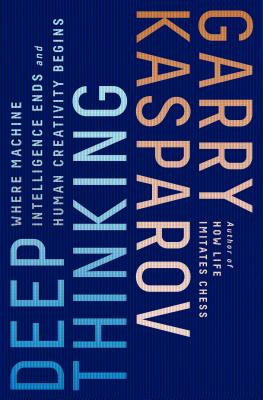Intermediate Java 7 Using Rational Application Developer (RAD) Training in Meriden
|
We offer private customized training for groups of 3 or more attendees.
|
||
Course Description |
||
| This 5-day course includes a short review of basic Java concepts, and
then moves on to a comprehensive coverage of more advanced topics in
Java and OO programming to provide participants with a strong grounding
in using Java in a sophisticated and productive manner. This course
goes well beyond the basics of Java and OO programming and covers
important topics such as composition, inheritance, polymorphism,
interfaces and exceptions, which are all key to creating well-structured
OO systems using Java. After coverage of these important areas, it moves
on to more advanced topics such as JDBC and JPA 2 (for database access),
the Java Collections Framework - including the important generics
capabilities, Java I/O, assertions, inner classes, and the reflection
API. Finally it covers useful tools for day-to-day programming such as
ant, maven, JUnit and various logging frameworks. This course covers
far more than an introductory course, and provides participants with a
comprehensive understanding of how to use Java's advanced capabilities
in a more sophisticated manner. It teaches a number of useful techniques
that enhance productivity and good system design - which Java
programmers may otherwise take years to absorb on their own.
Course Length: 5 Days
Course Tuition: $2250 (US) |
||
Prerequisites |
|
| Suitable for programmers with some previous experience in working with Java and Object-Oriented (OO) programming (equivalent to taking our Gentle Java course). | |
Course Outline |
|
Session 1: Review - Getting Started
Writing and Running Java programs
Setting up and Using the Development Environment
Session 2: Review - Class and Object
Creating classes with fields and methods
Encapsulation and access protection
Constructors
Other Capabilities (Static Members, null, final, Wrapper Classes
Session 3: Review - Control Flow, String, and Array
Flow of Control
Strings
Arrays
Session 4: Review - Packages
Using packages to organize code
Using import
Creating Packages
Package Organization and Classpath
LABS:
Using Packages to Organize Code
Session 5: Composition and Inheritance
Using Composition to Deal With Complexity
Composition/HAS-A, Delegation
Using Inheritance and Polymorphism to share commonality
IS-A, extends, Inheriting Features, Overriding Methods, Using Polymorphism
Class Object
Abstract Classes
LABS:
(Optional) Working with Composition
Using Inheritance to Specialize Classes
Session 6: Interfaces
Programming by Contract
Using Interfaces to Define Types
Interfaces and Polymorphism
LABS:
Using Interfaces to Remove Implementation Dependencies
Session 7: Exceptions and Error Handling
Exceptions
Exception Hierarchy
try and catch
Handling Exceptions
Program Flow with Exceptions
Finally
LABS:
Handle Exceptions
Define Exception Class
Session 8: Collections and Generics
The Collections Framework
Collection Interfaces
Collection, Set, List, Map, Iterator
Generics (Java 5)
Processing Items With an Iterator
for-each Loop (Java 5)
Using ArrayList
Using HashMap
More About Generics (Inheritance, Wildcards, Assignment)
LABS:
Using Collections
Session 9: JDBC and the JPA
JDBC Overview and Architecture
JDBC Connections, Statements, and Queries
Introduction to JPA (Java Persistence API)
Object-Relational Mapping (ORM) and JPA Architecture
Entity Class Introduction
Mapping Entity classes with @Entity, @Id, @Table, and more
Persistence Units, persistence.xml, the EntityManager and EntityManagerFactory
Using JPA to Work with Persistence Entities
JPQL and Querying with JPA
LABS:
Mapping a Simple Class
Using JPA to Access Persistent Entities
Inserting, Querying, and Other Capabilities
Session 10: Additional Java Features
Assertions
Type-safe Enums
Annotations
Session 11: I/O Streams
Readers and Writers
Filter Streams
InputStreams and OutputStreams
Converting Between Streams and Readers/Writers
New I/O (NIO) APIs
LABS:
Formatting with Java I/O
Session 12: Inner Classes
Why Use Inner Classes?
Named Inner Classes
Static Inner Classes
Anonymous Inner Classes
LABS:
Using Named Inner Classes
Using Anonymous Inner Classes
Session 13: Reflection
The class called Class
Finding Fields, Methods, and Constructors
Accessing Fields, Invoking Methods
Examining Arrays
LABS:
Examining Objects Using Reflection
Accessing Fields and Invoking Methods via Reflection
Session 14: Introduction to ant
ant Overview, Installing and Running ant
Buildfiles, Projects, Targets, Tasks, Properties
Creating Build Files
Paths(e.g. CLASSPATH, PATH)
Resource Collections - FileSets, DirSets, Files, PatternSets
LABS:
Running ant
Creating and Using Buildfiles
Using Basic ant Tasks
Session 15: maven Overview
Introduction and Installation
Maven Concepts and the POM (pom.xml>
Dependencies and Repositories
Using maven to build Java projects
LABS:
Using maven
Session 16: JUnit Basics
JUnit Overview, Test Driven Development
Tests and Assertions
Working With Exceptions
LABS:
Writing and Running Tests
Testing Exceptions
Session 17: Organizing Tests with JUnit
Writing Fixtures - @Before, @After
Test Suites, and Other Capabilities
Mock Objects
LABS:
Using Fixtures
Using Suites
Session 18: Introduction to Logging and log4j
Logging Overview
log4j Overview
Loggers, Appenders, Layouts
Configuring and Using log4j
Logger Hierarchy and Logging Levels
Working With Appenders
Using PatternLayout
Other Logging Frameworks (Java Logging, Apache Commons Logging)
LABS:
Setting Up log4j
Using Basic log4j Logging
Working With Loggers
Working With Appenders
Using Layouts
|
Course Directory [training on all levels]
- .NET Classes
- Agile/Scrum Classes
- AI Classes
- Ajax Classes
- Android and iPhone Programming Classes
- Azure Classes
- Blaze Advisor Classes
- C Programming Classes
- C# Programming Classes
- C++ Programming Classes
- Cisco Classes
- Cloud Classes
- CompTIA Classes
- Crystal Reports Classes
- Data Classes
- Design Patterns Classes
- DevOps Classes
- Foundations of Web Design & Web Authoring Classes
- Git, Jira, Wicket, Gradle, Tableau Classes
- IBM Classes
- Java Programming Classes
- JBoss Administration Classes
- JUnit, TDD, CPTC, Web Penetration Classes
- Linux Unix Classes
- Machine Learning Classes
- Microsoft Classes
- Microsoft Development Classes
- Microsoft SQL Server Classes
- Microsoft Team Foundation Server Classes
- Microsoft Windows Server Classes
- Oracle, MySQL, Cassandra, Hadoop Database Classes
- Perl Programming Classes
- Python Programming Classes
- Ruby Programming Classes
- SAS Classes
- Security Classes
- SharePoint Classes
- SOA Classes
- Tcl, Awk, Bash, Shell Classes
- UML Classes
- VMWare Classes
- Web Development Classes
- Web Services Classes
- Weblogic Administration Classes
- XML Classes
Java Programming Uses & Stats
|
Difficulty
|
Popularity
|
Year Created 1995 |
|
Pros
Most Commonly Used:
Great Career Choice:
Android Apps Development:
It Can Run On Any Platform:
Great Supporting IDE's: |
Cons
Uses a Lot of Memory:
Difficulty in Learning:
Slow Start Up Times:
Verbose and Complex Code:
Commercial License Cost: |
| Java Programming Job Market |

Average Salary
|

Job Count
|

Top Job Locations
New York City |
|
Complimentary Skills to have along with Java Programming
- If you are an experienced Java developer, learning a complimentary language to Java should come much more naturally. As an example JetBrains recently created the Kotlin programming language which is officially supported by Google for mobile development. Kotlin compiles to Java bytecode and runs on the JVM; it's purported to address many of Java's shortcomings... |






